

| Circe
| Friday, August 21, 2009 I lightly sanded the through hull fairing compound, and also the compound over the final remaining interior liner patch on the starboard bulkhead. Afterwards, I applied a very light coat of fine filler to the through hull patches to fill pinholes left by the microballoons. |
|
From cardboard, I made a template for a small bulkhead to support the forward end of the fuel tank platform and, after fine-tuning the shape, cut the bulkhead itself from 9mm Meranti plywood. I coated the plywood in epoxy on all sides and edges and set it aside to partially cure; meanwhile, I cut some tabbing to use to secure it in place. Once the epoxy had tacked sufficiently to allow me to continue to work, I installed the mini-bulkhead/support in a bed of thickened epoxy both top and bottom--I created a fillet on the bottom side--and installed my pre-cut tabbing to secure the bulkhead to the hull on the bottom (over the curved fillet) and the second piece to secure the top of the bulkhead. |
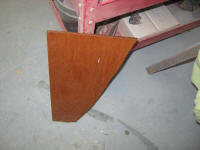
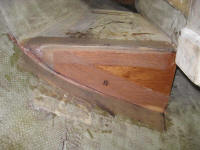 |
|
During the afternoon, I removed the bronze stem casting, which involved removing three bolts and one lag screw. Two of the three bolts came out without much difficulty, but the nut on one jammed before it was completely off, forcing me to cut the bolt. I made the mistake of cutting it from the outside, only to find that pushing the bolt through into the boat caused it to be obstructed by the deck above. There was insufficient clearance to allow me to pound it out from inside, so I was forced to cut off the excess inside the boat, jammed into the chainlocker. I had to repeat this three times before I could knock the entire bolt out, thanks to the thickness of the stem and the fiberglass-encapsulated wooden knee in the chainlocker, but after an inordinate amount of time I successfully removed the stem casting, which would make hull paint prep and painting easier and more successful. |
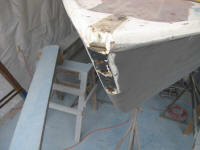
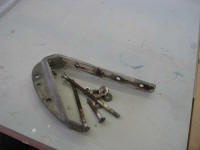 |
|
I spent some time leveling the boat--it was very close and needed only fine adjustments before I deemed it accurate. I also measured from the floor to the factory scribed waterline at bow and stern, knowing from previous experience that these measurements ought to be equal when the boat was level (which corresponded with the cabin sole, happily). |
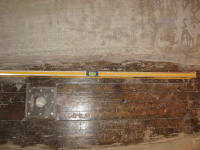
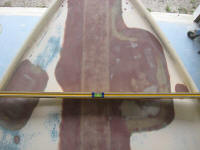
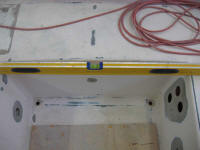 |
|
With the boat now suitably level, I checked the remaining bulkhead for plumb. As I suspected, the bulkhead was installed substantially out of whack: over an inch out of plumb in only 48". Given this, and the general condition of the bulkhead, I decided that it would probably pay to cut it out and replace it with a new one of better material and that was installed plumb and square, since the entire new interior would be built using this as a base reference point. This, along with some materials research and procurement for next week's work list and some end-of-week cleaning in the shop, wrapped up the day's work. |
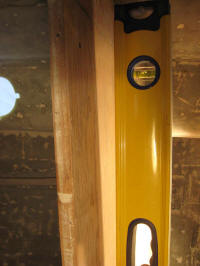
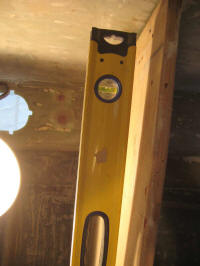 |
|